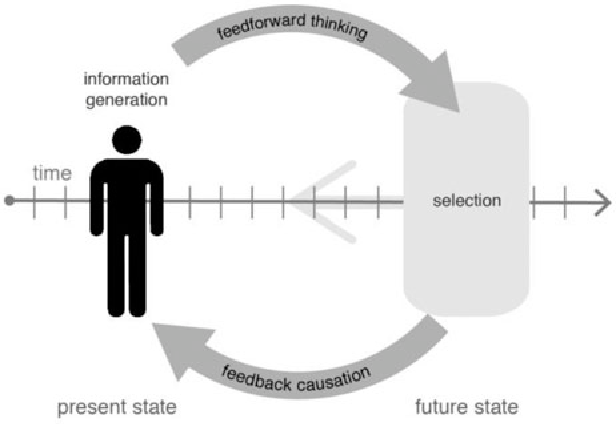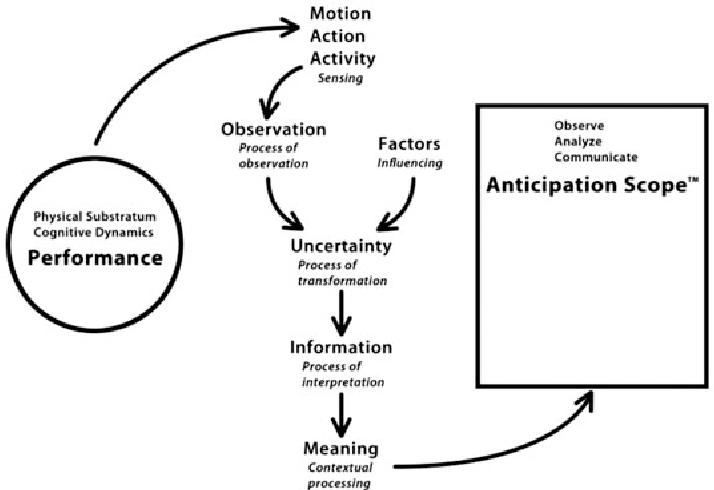Mihai Nadin - Adventures in Semiotics and Anticipation
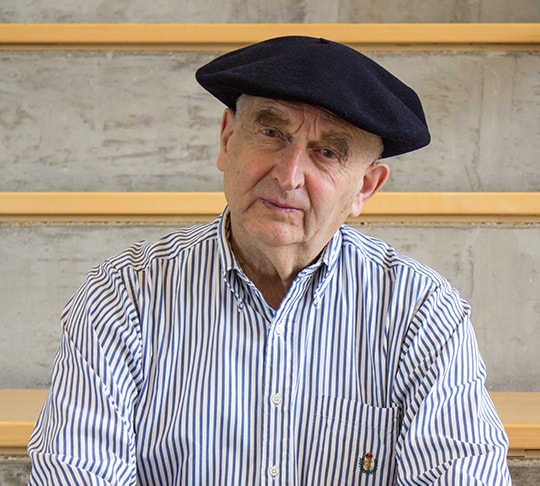
Mihai Nadin is a scholar and researcher in electrical engineering, computer science, aesthetics, semiotics, human-computer interaction (HCI), computational design, post-industrial society, and anticipatory systems. His publications on these topics number over 200, and he has lectured throughout the world. Currently Mihai Nadin is a professor at the University of Texas at Dallas. He is director of the Institute for Research in Anticipatory Systems.
His website: https://www.nadin.ws/
His research: https://www.researchgate.net/profile/Mihai_Nadin
Mihai Nadin on Semiotics
Research Paper: "Semiotics is Fundamental Science" - by Mihai Nadin (2013) (PDF)
Abstract: There is no way to acquire, store, and disseminate knowledge other than semiotically. Yet semiotics is hardly acknowledged in science, and not at all as science. Were it not for the fame of a few writers (Barthes, Derrida, and especially Eco), associated more with the semiotics of culture, few would even know that such a knowledge domain exists. In the age of computers, genetics, and networks—all of underlying semiotic condition—semiotics would at best qualify as pertinent to an obscure past, but insignificant for current endeavors. Gnoseologically, there is little to gain from acknowledging the shortcomings of semiotics. Epistemologically, quite a bit is at stake in grounding semiotics among the fundamental sciences. For this to come about, new interrogations become necessary: Why knowledge? What is knowledge? What kind of knowledge? How is knowledge acquired? One way or another, the answer will acknowledge semiotic processes as a necessary factor. The perspective advanced in this chapter relies on an understanding of the living, and, in particular, of the human being, that ascertains anticipation as definitory. The future is made part of the present via semiotic processes. This is significant because in the age of neurons, suggestive of brain activity and of attempts to emulate it, to distinguish between knowledge supporting human activity, embodied in new technologies, and knowledge essential to the unfolding of the living becomes very difficult
Quotes from the paper:
"Semiotics is the awareness of change captured in representations. In terms of its meaning, it is the actions it informs."
"Nietzsche (cf. Colli & Montinari, 1975, p. 3) observed that “Our writing tools are also working, forming our thoughts.” As we program the world, we reprogram ourselve. [...] Associated with meaning, data becomes information."
"Semiotic awareness, which instantiates metacognition (knowing what we know) is nothing other than the realization that acting upon representations enhances the outcome of human activity."
"The human being “reads” nature as a “language” expression, and, in the process of knowing, generates new representations. Let us recall Lewis Mumford’s observations: No computer can make a new symbol out of its own resources,” (1967, p. 29)"
"From the perspective of knowledge, the following needs to be stated: If we could aggregate all representations we would still not capture the reality in its infinite level of detail; nor could we capture dynamics in its openendedness (not to say without affecting it). The living unfolds beyond our epistemological boundaries. We are part of it. Our change is part of a broader change, which, again, influences our own. The sequence is infinite. Therefore every representation contains the observed and the observer. If the representation is only a sign, dynamics is left out."
“The human brain has not changed at the anatomical level, but now it works differently,” (Togo & Cantelmi, 2012).
Expressed differently, semiotics is relevant for “engineering” interactions: recipes are the “shorthand” of cooking. They carry explicit instructions and implicit rules, that is, assumptions of shared experiences. Semiotics embodies the sharing, but does not substitute for the experience. The informational level corresponds to “fueling” the process, providing the energy. [...] Semiotics encodes in generating representations, and decodes in interpreting representations.
In this respect, law is a repetitive pattern. Physical phenomena are acceptably described in mathematical descriptions called laws. This is what Windelband (1894) defined as the nomothetic (derived from nomothé in Plato’s Cratylus, 360 BCE). The same cannot be said of living interactions, even if we acknowledge repetitive patterns. No living entity is identical with another. The living is infinitely diverse. Therefore, semiotics could qualify as the attempt to acknowledge diversity unfolding over time as the background for meaning, not for scientific truth. This is what Windelband defined as the idiographic. [...] Semiotic knowledge is about meaning as process.
Signs are “alive,” interacting with each other, self-reproducing as the context requires. Consequently, one might be inclined to see interaction processes mirrored into sign processes—or what Peirce called semiosis. But interactions are more than sign processes. Better yet: sign processes describe only the meaning of interactions, but not the energy processes under girding them.
When vitalism, as the doctrine of the élan vital (which some equate with the soul) was debunked, the questions of causality associated with the realization that the biosphere is not reducible to the physical were simply brushed aside. Over time, every scientist claiming that the living and non-living have a different dynamics was eliminated from the list of potential Nobel Prize nominees (and avoided). In recent years, this has started to change
Focusing on signs caused semiotics to miss its broader claim to legitimacy: to provide not only descriptions of the meaning of interactions, but also knowledge regarding the meaning of the outcome of interactions, the future.
As information theory—based on the en-compassing view that all there is, is subject to energy change—emerged (Shannon & Weaver, 1949), it took away from semiotics even the appearance of legitimacy. [...] But there is also a plus side to what Shannon suggested: Information theory made it so much more clear than any speculative approach that semiotics should focus on meaning and significance rather than on truth.
Parallel to this recognition is the need to assess meaning in such a manner that it becomes relevant to human activity. So far, methods have been developed for the experimental sciences: those based on proof, i.e., the expectation of confirmation and generalization. But there is nothing similar in respect to meaning, not even the realization that generalization is not possible; or that semiotic knowledge is not subject to proof, rather to an inquiry of its singularity. The nomothetic comprises positivism; the idiographic is the foundation of the constructivist understanding of the world (cf. Piaget, 1955; von Foerster, 1981).
Given the epistemological condition of mathematics, new evidence is not in the jargon of mathematics. A new mathematical concept or theorem is evidence. Probably more than science, mathematics is art. It is idiographic, not nomothetic knowledge. As we know from Turing and Gödel, it cannot be derived through machine operations (Hilbert’s challenge). If there is a cause for mathematics, it is the never-ending questioning of the world appropriated by the mind at the most concrete level: its representation. The outcome is abstraction. This is what informed Hausdorff (alias Paul Mongré) as he described human nature. There is, of course, right and wrong in mathematics, as there is right and wrong in art. But neither a Beethoven symphony nor Fermat’s conjecture (proven or not) is meant as a hypothesis to be experimentally confirmed. Each has an identity, i.e., a semiotic condition. Each establishes its own reality, and allows for further elaborations. Not to have heard Beethoven’s symphonies or not to have understood Fermat’s law does not cause bridges to collapse, or airplanes to miss their destinations.
Semiotics is not a discipline of proofs: The ambiguity of disease is reflected in the ambiguity of representations associated with disease. Better doctors are still “artists,” which is not the case with software programs that analyze test results. Diagnosis is semiotics, i.e., representation and interpretation of symptoms. They are both art and science. Machine diagnosis is information processing at work. Human diagnosis is the unity of information and meaning.
The goal is to make the reader aware of why even the most enthusiastic semioticians end up questioning the legitimacy of their pursuit.
15. INSIGNIFICANCE IS THE RESULT OF FAILED PRAGMATICS.
There are no evaluation criteria to help distinguish the “wheat” from the “chaff.” In the democratic model of science (semiotics and other fields), “Anything goes.” [...] What strikes the possible reader is the feeling that semiotics deals more with its own questions than with questions relevant to science, philosophy, or to today’s world.
Take only the still not concluded attempts to prove Fermat’s Theorem (most recently Colin McClarty, 2013). Fundamentally, the approach extends deep into the notion of representation. The very elaborate mathematical apparatus, at a level of abstraction that mathematics never reached before, makes the whole enterprise semiotically very relevant.[...] A question that begs the attention of semioticians is, “How far from the initial mathematical statement (Fermat’s Theorem) can the proof take place?” That is, how far can the representation of representation of representation, and so on extend the semiotic process before it becomes incoherent or incomprehensible?
Never before has language—in its general sense, not only as the language we speak—been as central to research as it is today. [...] Natural language is the most ubiquitous medium of interaction. It is involved in knowledge acquisition, in its expression, communication, and validation. Semiotics, if founded not around the sign concept—quite counter-intuitive when it comes to language (Where is the sign: the alphabet, the word, the sentence?)—but with the understanding of the interactions languages make possible, would contribute more than descriptions, usually of no consequence to anyone, and post facto explanations.
The subject ought to be understood as broadly as possible. This means that within the realm of the living, there is a whole gamut—from the mono-cell to homo faber—of representations to consider. Is there anything that qualifies as semiotically relevant across the various forms of the living? As already stated in the preliminaries, interaction is probably the most obvious aspect. At a closer look, the making of the living consists of integrated interactions—from the level of the cell to that of organisms. At all these levels, representations are exchanged. Therefore, semiotic processes appear as a characteristic of the whole (organism), but also as one among organisms (same or different).
Success and failure depend decisively more upon interpretation than upon the amount of data. An infinite amount of data cannot compensate for an error in interpretation. Machines are, by many orders of magnitude, better in processing information, but not really better than humans in interpreting it. They can handle way more data than the people who build them; but quantity does not automatically lead to improved comprehension. In a changing context, interpretation becomes consubstantial with dynamics. Machines do not change; humans (the living) change.
No information process (e.g., computer, sensor-based information harvesting, intelligent agents-based activities) is possible without representation. Representation is the definitory subject of semiotics. While electrons move through circuits, and while logic is emulated in hardware (circuits performing logical operations), operations on representations are the prerequisite for any information processing.
Brain imaging revealed that taxi drivers in some of the big cities (London was the first address researched), difficult to navigate, developed in the process measurable new faculties Indeed, the plasticity of the brains of those who navigate under the influence of GPS data changes (not always for the better). Of course, these changes are semiotic in nature: Understanding of representations and the ability to match goals and means (a request such as “Get me to Piccadilly in the shortest time,” involves quite a number of parameters) are semiotic processes. The emergence of GPS-based navigation might lead to the loss of some faculties. Semioticians should be aware of the fact that the world before maps and the world after maps became available are very different realities.
Indian Buddhism and Brahman-ism, the Christian infatuation with signs (St. Augustine’s De Doctrina Cristiana, 397 CE, and St. Anselm’s Monologion, 1075-1076; see Hopkins, 1986), and Avicenna’s explorations in medicine and theology remain documentary repositories of the many questions posed by two very simple questions: How can something in the world be “duplicated” in the mind? Take note: the question is not about signs, but about re-presentation.
Edward O. Wilson (1984) came up with a provocative statement of significance to semiotics: “Scientists do not discover in order to know, they know in order to discover.”
22. TAROT CARD READING IS NOT (YET) AN ACADEMIC DISCIPLINE. But it might become one. [...] Semiotics became the stage for literary critics, art historians, confused structuralists, and even for some linguists, mathematicians, and sociologists. Some philosophers also ventured on the stage. Before too late, we had the semiotics of feminism, multiculturalism, human rights, sexuality, food, and even the semiotics of wine; we had gay and lesbian semiotics, environmental semiotics, and even global warming or sustainability semiotics. But no semiotics!
23. THERE IS MORE TO INTERACTION THAN LANGUAGE
Preoccupation with what is called natural language affected the focus on the sign. It informed the reading of past attempts in semiotics in such a manner that what actually lies behind the sign is cast aside, never really recognized. All this rendered the notion of sign captive to an ideology that dominated semiotics from its beginnings. Simply stated, this ideology is logocratic. That is, it ascertains that every sign can be reduced to a language sign; moreover, that any interaction is language dependent.
If, finally, semiotics could in our days free itself from the obsession with sign-based language as object of its inquiry, it could help debunk quite a number of dogmatic positions.
The broad agreement that knowledge is expressed more and more in computational form could translate into a well-defined goal: express semiotic knowledge computationally. As such, the goal deserves attention because even though deterministic machines are inadequate for capturing nondeterministic processes, we can work towards conceiving new forms of processing that either mimic the living or even integrate the living (hybrid computation).
Computational semiotics (making reference to Dmitri Pospelov and Eugene Pendergraft, to James Albus, to “language games” behind which Wittgenstein is suspected, to Luis Rocha and Cliff Joslyn, and even to Leonid Perlovsky and his intelligent target tracker) is more than looking for justification for AI research, or for some computer-based terminology associated with signs. It would be encouraging to engage those interested in foundational aspects of semiotics in a computational effort. One possible result could be a semiotic engine conceived as a procedure for generating representations and for supporting interpretation processes. [...] However, if machine-generated representations were to trigger the claim of replacing the living processes leading to comprehensive dynamic representations of a changing world, we would face a real danger. In representing something, the living simultaneously re-presents itself. This contributes to the knowledge the outlook and the sense of future derived through human representations. Each representation, after all, embodies anticipation. Machines, regardless of their level of sophistication, do not anticipate.
24. IS THERE A SEMIOTIC METHOD? [...] This is an opportunity, as good as any, to spell out the alternative to the semiotics focused on the sign. I suggest that, instead of the atomistic view of a sign obsessed with semiotics, we adopt a dynamic view, of events succeeding in time. The notion that each event—such as perceiving an image, hear-ing a sound, experiencing a texture, etc.—is “made up” of signs is less important than the determination to integrate successive experi-ences. Narration is a historic record: event1, event2, event3. .
In this view, the series is made up of suc-ceeding signs. While each event is relevant, the focus is on the integrated series, more precisely, on its meaning. But more on a narration-based semiotics in the concluding part of this study.
27. NARRATION AND STORY: The most intuitive description of the narra-tive is the following: the record of a sequence of events as they succeed in time. The word (from the Latin narrare) means to recount. It suggests that a record of succeeding events in time, a time series, describes what individuals or groups accomplish and how. Therefore, each narrative adds up to knowledge, at least in the sense of documenting successful and less successful activities.
With the exception of Windelband (1915), almost no one has tried to define the distinction between narrative knowledge, corresponding to a historic record of change (idiographic), and scientific knowledge (nomothetic), cor-responding to our attempts to describe how reality works. The idiographic captures patterns of events; the nomothetic focuses on scientific law. Of course, those who accept the religion of determinism would like to transform the uniqueness of experience captured in the narration into laws, thus opening the avenue towards automating whatever we do.

Thesis 1: Narration is a record of change.
Thesis 2: Story is an open-ended process of interpreting narration.
Thesis 3: Narrations are representations of change.
Thesis 4: Stories are interpretations of the narration of change.
Thesis 5: The clock of narration and the clock of interpretation are different.
28. SEMIOTICS IS ABOUT THE MEANING OF CHANGE

Mihai Nadin on Anticipation
Premise: Complement the cause-and-effect description of physical reality by a description characteristic of living systems. In living systems, the current state is determined not only by past and present, but also by their possible future states. Scientists are discovering more and more the significance of anticipatory characteristics (from the molecular level to the level of complex systems). As scientists try to endow matter and various mechanisms with intelligence, anticipation becomes more important, involving new forms of computation. Anticipation can be seen as a "second Cartesian revolution." (via http://anteinstitute.org)
Why is it a subject of research? Anticipation occurs in all spheres of life. It complements the physics of reaction with the pro-active quality of the living. Nature evolves in a continuous anticipatory fashion targeted at survival. The dynamics of stem cells demonstrate this mechanism. Through entailment from a basic stem cell an infinite variety of biological expression becomes possible.
Sometimes we humans are aware of anticipation, as when we plan. Often, we are not aware of it, as when processes embedded in our body and mind take place before we realize their finality. In tennis, for example, the return of a professional serve can be successful only through anticipatory mechanisms. A conscious reaction takes too long to process. Anticipation is the engine driving the stock market. Creativity in art and design are fired by anticipation. “The end is where we start from,” T. S. Eliot once wrote. Before the archer draws his bow, his mind has already hit the target. Motivation mechanisms in learning, the arts, and all types of research are dominated by the underlying principle that a future state—the result—controls present action, aimed at success. The entire subject of prevention entails anticipatory mechanisms. (via http://anticipation.info)
Anticipation and the Aging Car - Interview with Dr. Mihai Nadin'
A Theory of Change - The Acorn and the Stone - talk by Dr. Mihai Nadin (2014)
Related: Anticipation in Artificial Intelligence (wikipedia)
More talks by Dr. Mihai Nadin:
- Anticipation, Design and Interaction
- Anticipation and creativity
- Dr.Mihai Nadin Youtube Channel
- A Bifurcation called 2016
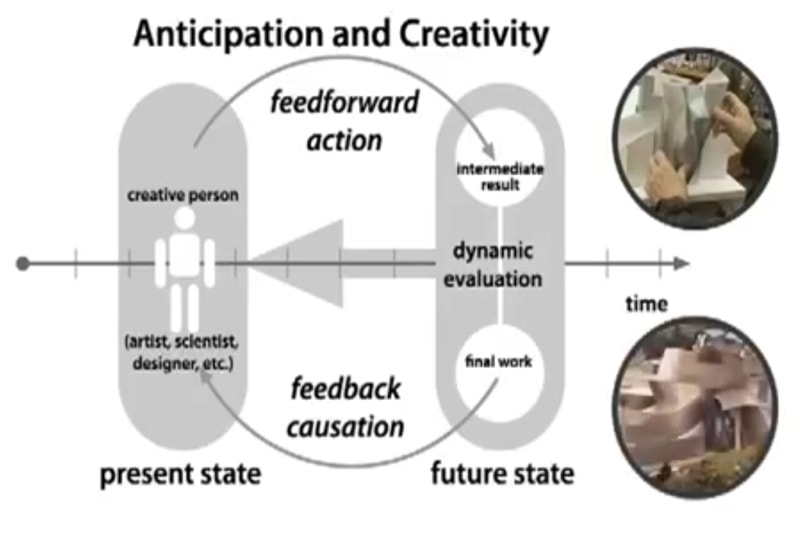
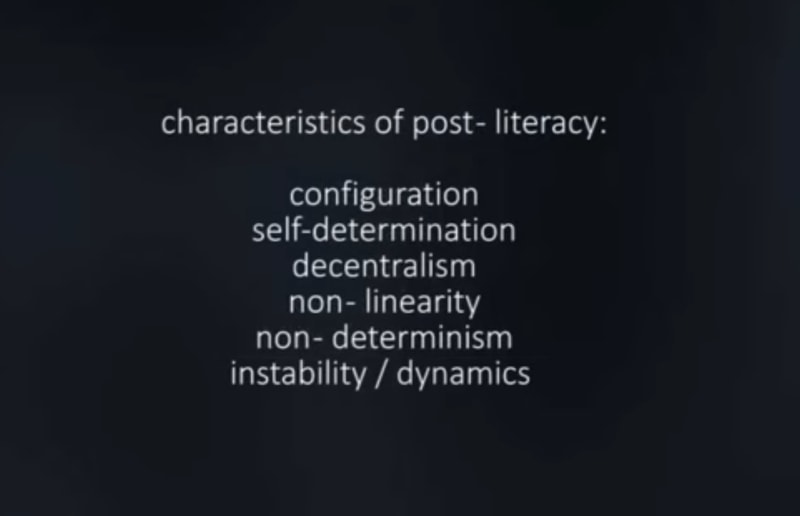
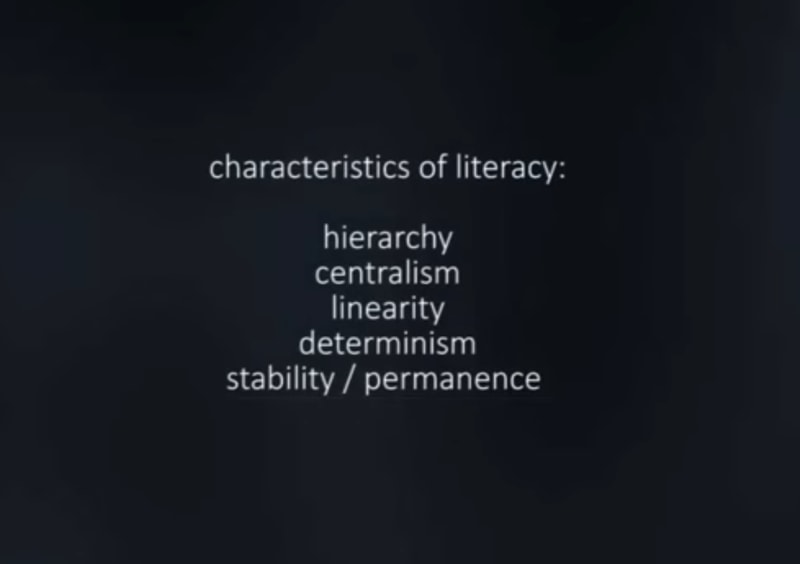
#KM #HCI #Science #Philosophy #Design #Creativity #Art #Architecture

